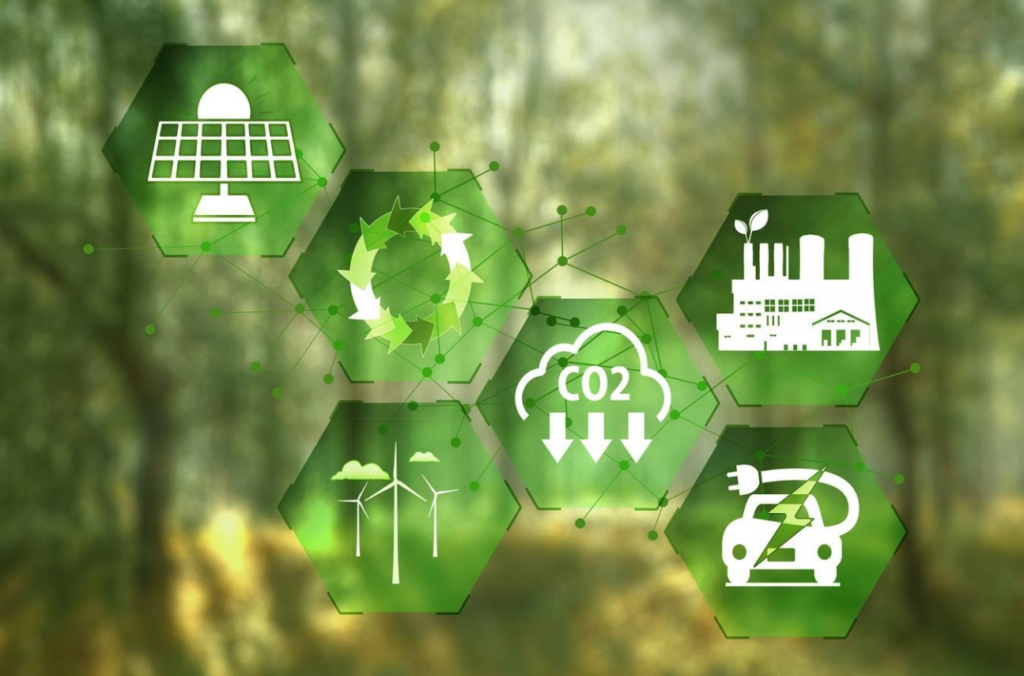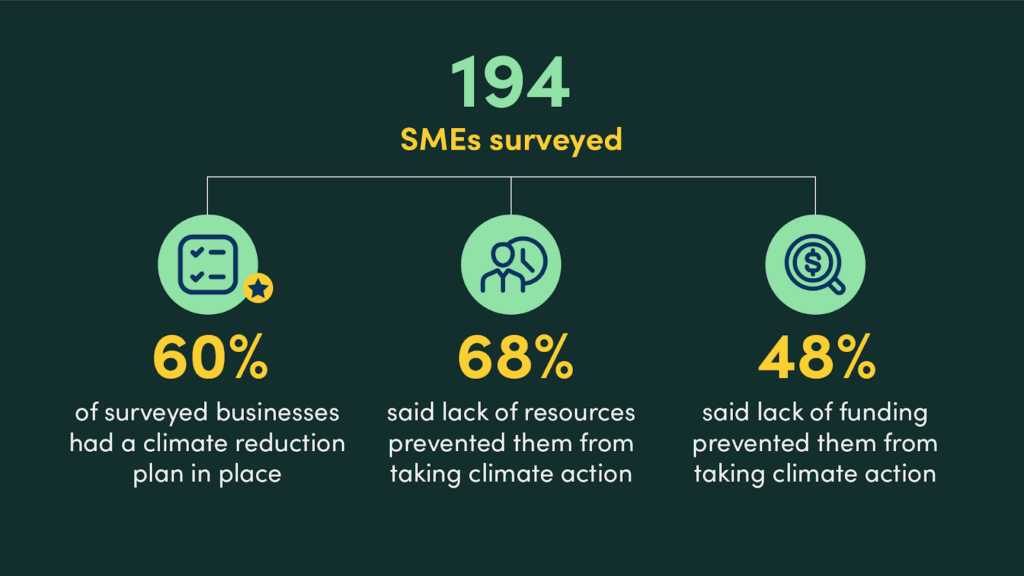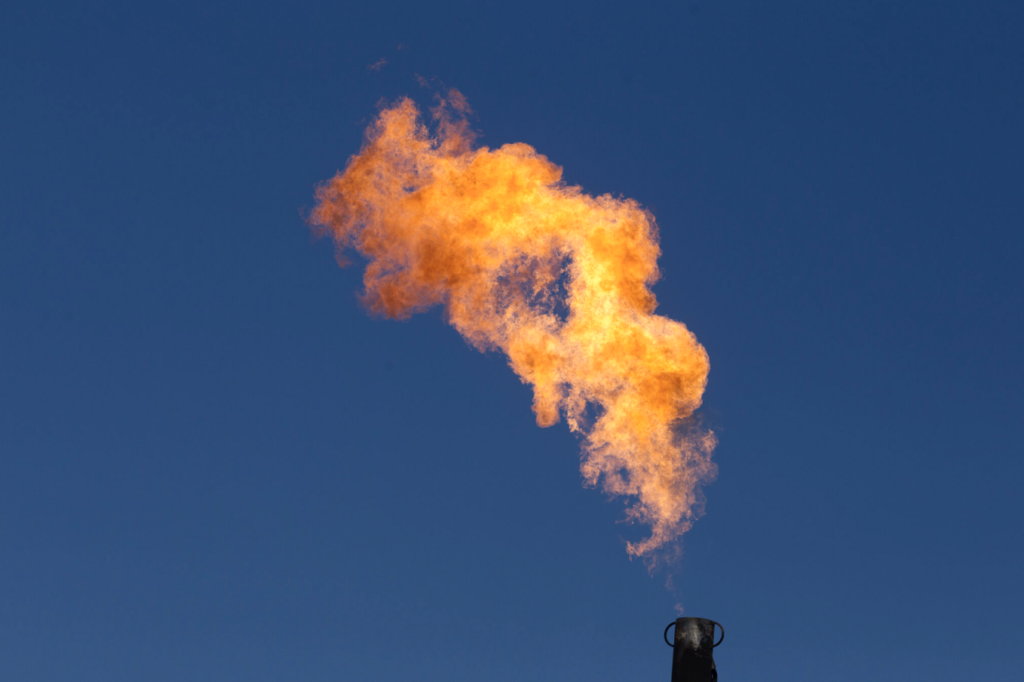Carbon Footprint
Introducing the Issue
A carbon footprint is the total amount of greenhouse gases that are generated by an organisation’s actions. There are ever growing expectations that businesses will take urgent and significant actions to reduce their carbon footprints, and thus contribute to the transition to a global net zero economy.
What is your company’s Carbon Footprint?
What is your company’s carbon footprint? Do you measure and manage it? Have you taken and/or communicated your position on climate change? Perhaps this isn’t an issue that you need to worry about right now?
We’ve developed benchmarks that attempt to define Poor, Okay, Good and Excellent company performance standards on carbon footprint. You are invited to assess your business against them, for free and without obligation.
Select the statement below which most closely applies to your business, and then explore the linked survey. Anything you input remains strictly confidential to you unless you specifically choose to use it as part of a written account or story, which you may later choose to share internally or externally. Any responses you submit will also contribute to our shared knowledge and understanding of this important issue – thank you.
Excellent
Our business is fully committed to reducing its carbon footprint and has robust actual- or net-zero emissions goals with detailed plans to achieve them.
Good
We actively track and manage our carbon footprint and make efforts to achieve carbon neutrality goals.
Okay
We do things on an ad hoc basis related to the reduction of our carbon footprint. Our endeavours are inconsistent or often lower priorities than cost and other commercial considerations. Or we explain how carbon footprinting is neither relevant nor immaterial to our business.
Exploring the Issue
Global warming and climate change are pressing issues that affect the entire world. If the world at large doesn’t begin to reduce emissions and their carbon footprint, the impacts will become irreversible. However, we have not yet passed the ‘point of no return’ and there is certainly hope that with the right actions we can begin to fix climate change.
Carbon emissions between 2010 and 2012 were the highest in human history, and scientists have known for decades that these excess emissions are triggering global warming. Additional emissions will continue to exacerbate the problem and it isn’t just up to one company or country to solve this issue: each company has a responsibility to do their part to help reduce the effects of climate change. The Paris Agreement set forth in 2015 describes how we must not exceed 465 parts per million of greenhouse gases in the atmosphere. It also holds member nations accountable and provides strategies for reducing their effects on the environment. Within each individual company, there’s a lot that can be done to reduce emissions and get closer to being net zero.
Net zero is a step above being carbon neutral. While carbon neutral refers to not increasing your carbon emissions and reducing emissions with offsets, net zero emissions takes into account everything that carbon neutral does, as well as scope three emissions. Scope three emissions are those emissions that are caused by assets that your company does not own or control. Examples of scope three emissions include upstream activities such as leased assets or employee commuting, while examples of downstream activities include the use of sold products and company investments. These are harder to calculate and control, so achieving net zero emissions is much more difficult to do than carbon neutral.
However, net zero is ultimately what we need to achieve if we wish to stop or reverse climate change going forward.
In general, net zero means doing everything in your power to reduce carbon emissions, and using offsetting as a last resort. Given that scope three must be taken into account for achieving net zero emissions, it is harder to achieve and must be a deliberate action taken by the company. Companies looking to become net zero have to identify where their carbon emissions lie and how they can reduce them. This can include restructuring supply chains in order to use other companies that go out of their way to have lower carbon emissions.
Besides the general positive impact on the climate, there are a multitude of benefits companies can gain by achieving net zero. Being net zero can help to reduce costs by increasing efficiency and reducing consumption. It can improve brand image, attract new customers, and satisfy stakeholders. Additionally, being net zero is required for many government contracts as outlined in PPN 0621.
Definitions
The 1.5 Alive Pact was made during COP26, reaffirming the goal of the 2015 Paris Agreement “to pursue efforts” to limit the global average temperature increase to 1.5 degrees Celsius above pre industrial levels.
Carbon Footprint is the amount of carbon dioxide and other carbon compounds emitted due to the consumption of fossil fuels by a particular person, group, etc.
Carbon Neutral is a policy of not increasing carbon emissions and achieving reduction through offsets.
Climate Change is a long-term change in the average weather patterns that have come to define Earth’s local, regional and global climates.
Climate Science is an umbrella term referring to scientific disciplines studying aspects of the Earth’s climate. A reflection on the methodology used to reach various conclusions about how the climate may evolve and what we should do about it.
Downstream Emissions are emissions released as a result of your product or service existing.
Global Warming is the long-term heating of Earth’s climate system observed since the pre-industrial period (between 1850 and 1900) due to human activities, primarily fossil fuel burning, which increases heat-trapping greenhouse gas levels in Earth’s atmosphere.
In a greenhouse, sunlight enters, and heat is retained. The Greenhouse Effect describes a similar phenomenon on a planetary scale but, instead of the glass of a greenhouse, certain gases trap the sun’s heat which results in increasingly raising global temperatures.
The Greenhouse Gas Protocol (GHG protocol) establishes comprehensive global standardised frameworks to measure and manage greenhouse gas (GHG) emissions from private and public sector operations, value chains and mitigation actions.
Greenhouse Gases are gases that absorb and emit radiant energy within the thermal infrared range, causing the greenhouse effect. Most common greenhouse gases include carbon dioxide, methane and nitrous oxide.
The International Panel on Climate Change [IPCC] is the United Nations body for assessing the science related to climate change.
Net Zero is the balance between greenhouse gases produced and the amount removed from the atmosphere.
PAS 2060 is the international standard carbon neutral certification that demonstrates an organisation’s commitment to decarbonisation, and the neutralisation of remaining impact through the support of environmental projects.
The Paris Agreement is an agreement among the leaders of over 180 countries to reduce greenhouse gas emissions and limit the global temperature increase to below 2 degrees Celsius
Scope 1 Emissions are direct emissions that come from operations owned or controlled by your company.
Scope 2 Emissions are indirect emissions coming from the generation of purchased electricity, steam, heating or cooling by your company.
Scope 3 Emissions are all other indirect emissions that occur in the value chain, including both upstream and downstream emissions.
Upstream Emissions are emissions that are contributing towards the creation of your product or service.
Links & Further Resources
ARTICLES

British Standards Certifies TDCX’s Carbon Footprint Reporting
Benzinga
This article explores how over 300 companies have joined The Climate Pledge and are agreeing to go net-zero carbon by 2040. It also goes into how these companies are being held accountable through different sustainability reporting measures. Large companies such as Microsoft and Amazon joining this pledge is very promising for the future of our climate as it shows a strong push for more companies to join and focus on reducing carbon emissions.

Small Businesses Face Recurring Barriers To Carbon Reduction
SME Climate Hub
This article explores how over 300 companies have joined The Climate Pledge and are agreeing to go net-zero carbon by 2040. It also goes into how these companies are being held accountable through different sustainability reporting measures. Large companies such as Microsoft and Amazon joining this pledge is very promising for the future of our climate as it shows a strong push for more companies to join and focus on reducing carbon emissions.

UK Rewriting Climate Plan But Keeping Emissions Goal The Same
Bloomberg
This article goes over the UK updating their climate plans in order to cut emissions 68% by 2030. This is in line with the Paris Agreement and will be necessary to help stay under the 1.5 degrees Celsius increase compared to pre-industrial levels. This update comes during the severe energy crisis that has been increasing pressure to move to more green energy.
RESOURCES

The Greenhouse Gas Protocol
The Greenhouse Gas Protocol
GHG Protocol establishes comprehensive global standardised frameworks to measure and manage greenhouse gas (GHG) emissions from private and public sector operations, value chains and mitigation actions. This resource provides information on international standards regarding net zero and tools that businesses can use to structure their environmental impact plans.

Inside Climate News
Inside Climate News
A Pulitzer Prize-winning, nonprofit news agency called Inside Climate News offers crucial reporting and analysis on climate change, energy, and the environment. Keep up to date on the latest news on climate change and climate activism around the world here.
